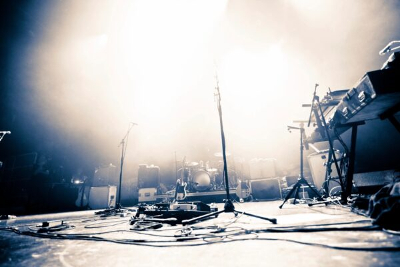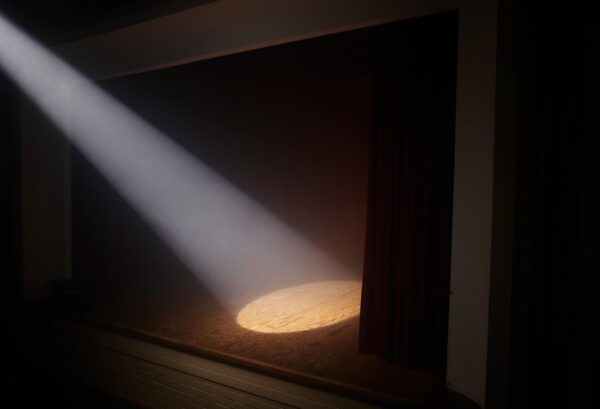Stage equipment is notoriously sensitive, requiring specific care and conditions. A major flood light fiasco can cause severe damage to this equipment, often leading to costly repairs or replacements.
Drenched in chaos, handling water-damaged stage equipment is a meticulous task. Fast and efficient actions paired with the right techniques are critical when your toolkit is underwater.
No one wants to navigate the overwhelming journey of floodlight recovery alone. The assistance of an experienced water damage service provider can be a saving grace in such situations.
Impact of Water-Damage
Every droplet wreaks havoc. Water damage can compromise the performance and longevity of stage equipment. Understanding the implications is key.
Without proper intervention, lingering moisture can lead to rust formation, short circuits and other potentially dangerous situations.
As per reports, water damage accounts for roughly 30% of all property damage claims in the United States.
Averaging at about $10,900 per claim, water damage incidents are not just physically devastating but financially draining as well.
This makes water damage a serious concern for any business or homeowner — let alone those managing stage equipment.
Resource Analysis
Once you’ve recognised the severity of water damage, it’s essential to conduct a thorough resource analysis.
This involves examining every piece of damp equipment to evaluate the extent of harm endured and remedial measures required.
Remember, safety comes first. Wet electronic equipment should be handled very carefully to prevent potential accidents.
- Prioritize drying: Begin by drying your equipment thoroughly yet gently. Avoid using heat or high-powered fans which may cause additional damage.
- Inspection: Look for visible signs of damage. This includes rust, discolouration, or unusual smells, indicating greater harm.
- Consult professionals: When in doubt, always consult a professional. Overlooking even minor issues can lead to serious consequences later on.
Prompt action can help mitigate losses. Roughly 14,000 people in the United States alone experience a water damage emergency daily at home or work.
Water-damaged stage equipment is more than just a floodlight fiasco. It’s about salvaging what’s left and building back stronger.
What Constitutes Reconditioning
The process of reconditioning entails detailed inspection, cleaning, and restoration of water-damaged stage equipment. Recognizing the variety in equipment types, each demands a unique approach.
Drying and Cleaning
Water damage is perilous because moisture can linger inside devices, leading to further damage. Specialists use industrial-grade dehumidifiers to remove all lingering moisture followed by thorough cleaning.
Fungus Eradication
In conditions of high infestation, fungus can develop in damp areas. Dismantling equipment for deep cleaning, sterilization and fungus eradication becomes essential.
Testing Functionality
Every piece of reconditioned equipment must undergo various testing phases. Instruments are evaluated for functionality to ensure optimal performance before declaring them fit for use.
Warranty Assurance
To instill confidence, providers offer warranties on their reconditioned products. This gives customers peace of mind knowing their newly-repaired equipment is covered against potential faults.
Cost Implications
The financial impact of water damage on stage equipment can be staggering. The cost decisions pivot around evaluating repair versus replacement.
Repair versus Replace
Evaluating whether it’s more economical to repair or replace damaged equipment is crucial. This hinge decision dictates overall cost implications involved in recovering from a floodlight fiasco.
Professional Service Costs
Type, extent of damage and expertise required determine professional service charges. Repair services may involve electrical work, part replacement or even extensive cosmetic restoration.
Hidden Costs
Hidden costs involve implications of downtime, replacement parts, lost revenue during equipment outage, and sometimes even complete venue closure. It’s essential to factor in these unplanned expenses.
Economic Longevity
Considering the longevity of repaired equipment is also crucial. Repair may be an immediate low-cost solution but could lead to more expenses if the fixes have a shorter lifespan.
Goals and Planning
Before diving into the task of managing water-damaged stage equipment, it’s crucial to establish goals and plan the process meticulously. This strategic approach helps in effective coordination, minimizing further damage, and increasing equipment longevity.
- Identify Equipment Status: First, figure out which equipment pieces have been affected by the floodlight fiasco. A detailed inventory will aid in prioritizing repair and replacement tasks.
- Determine Severity: Next, assess the extent of the damage. This information is vital to deciding whether to repair or replace the equipment.
- Prioritize Solutions: From cementing a budget to scheduling the work, formulate a plan for dealing with the situation. Unanticipated costs can escalate quickly if left unplanned.
Step-by-step Equipment Handling
Your stage equipment recovery process should be systematic and calculated. Here’s a step-by-step guide to ensure safety and efficiency.
- Personal Safety First: Before doing anything else, ensure every team member’s safety. Floodwater may contain harmful substances, so always wear protective gear when evaluating and handling damaged equipment.
- Unplug All Equipment: Prioritize turning off all electrical items that have come in contact with water, even if they appear undamaged. Water and electricity are a dangerous combination.
- Dry Out Equipment: Use fans, dehumidifiers, or other drying methods to remove moisture from flooded gear as soon as possible.
- Contact Professionals: Unless your team includes skilled electricians or repair specialists, consider bringing in professionals to inspect and possibly fix damaged items.
Following these steps will put your stage back in working order as quickly and safely as possible. Remember: proactive planning and strategic implementation are the keys to tackling a floodlight fiasco.
ESFI’s Programs Impact
The Electrical Safety Foundation International (ESFI) plays a significant role in educating the public about water damage and electrical equipment safety. They provide a plethora of resources to help individuals make informed decisions.
Education and Awareness
Through their educational programs, ESFI sharpens awareness about the dangers of water-damaged stage equipment. These programs shed light on how to handle such situations safely and efficiently.
Providing Reliable Resources
ESFI offers reliable resources to aid in enhancing efficiency when dealing with water-damaged equipment. It guides on the steps to follow for effective damage control, thus reducing losses.
Timely Communication Strategy
Having an effective communication strategy is vital when responding to floodlight and other stage equipment water damage. Clear, timely communication can significantly reduce the extent of damage.
Usually, it involves alerting the relevant emergency response teams, coordinating with insurance providers, and informing stakeholders about the situation. A good plan ensures everyone is on the same page, which can expedite recovery efforts.
| Type of Loss | Impact |
| Mold Damage | $2.5 billion annually for the insurance industry. |
| Basement Water Damage | Nearly 98% basements in the U.S. will experience water damage. |
| Plumbing System Failures Home Damage | Second most common homeowner loss leading to a $10,000 average claim amount. |
Note: The above data underscores the importance of prompt communication and action after water damage. Given the staggering costs associated with such incidents, it is crucial to act swiftly and diligently when they occur.
How to Ensure Compliance
Your stage equipment represents a significant investment and, as such, needs suitable care, especially relating to any water damage potential. Here are the key aspects to look at:
- Regular Maintenance: Keep your stage equipment routinely checked for compliance with operational safe standards.
- Adequate Protection: Ensure equipment housing is always waterproof, thereby mitigating flood light issues.
- Professional Inspection: Hire certified experts for inspection ensuring stage equipment safety per established guidelines.
Following these measures will not only extend your equipment’s lifespan but guarantee its optimal operation even under adverse conditions.
Education on Damage Control
A well-informed team can minimize any damage from unexpected incidents. Thus, ensure your staff understands well the emergency protocols for water-damaged stage equipment.
“Knowledge is key in mitigating flood light fiasco.”
The core elements of efficient damage control include:
- Fast Response: Train your team to act promptly when water damage occurs to your stage equipment.
- Safe Handling: Emphasize the importance of using appropriate safety gear while dealing with water-damaged equipment.
- Detailed Reporting: Document all incidents meticulously to improve response and prevention strategies in the future.
In the end, building a resilient team that’s equipped with the right knowledge can significantly limit water-damage-related losses but also enhance general safety practices.
Taking Proactive Steps
Caring about compliance and educating teams about damage control represents a proactive approach towards handling potential water damage for the stage equipment. Ensuring this will help you focus more on the creative aspects of your stage show, leaving fewer worries behind about the floodlight fiascos. Always remember: Great performances rely not only on spectacular lights but also on resilient equipment.



